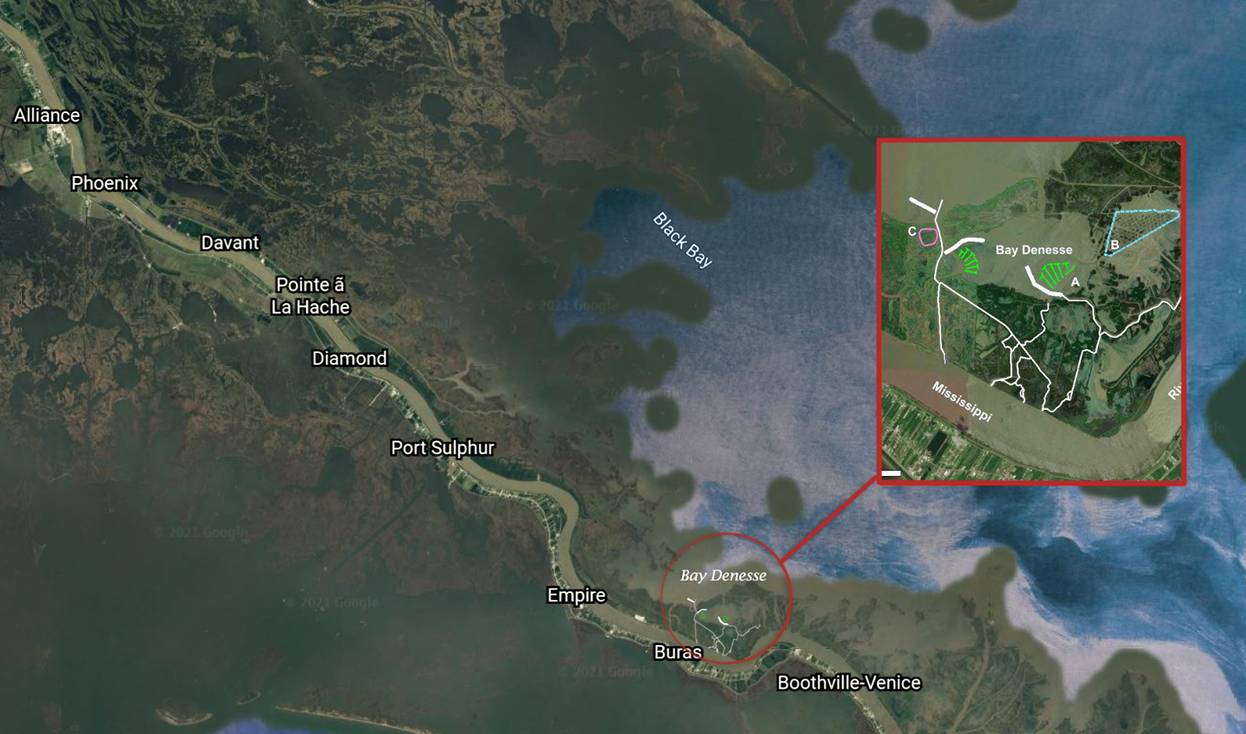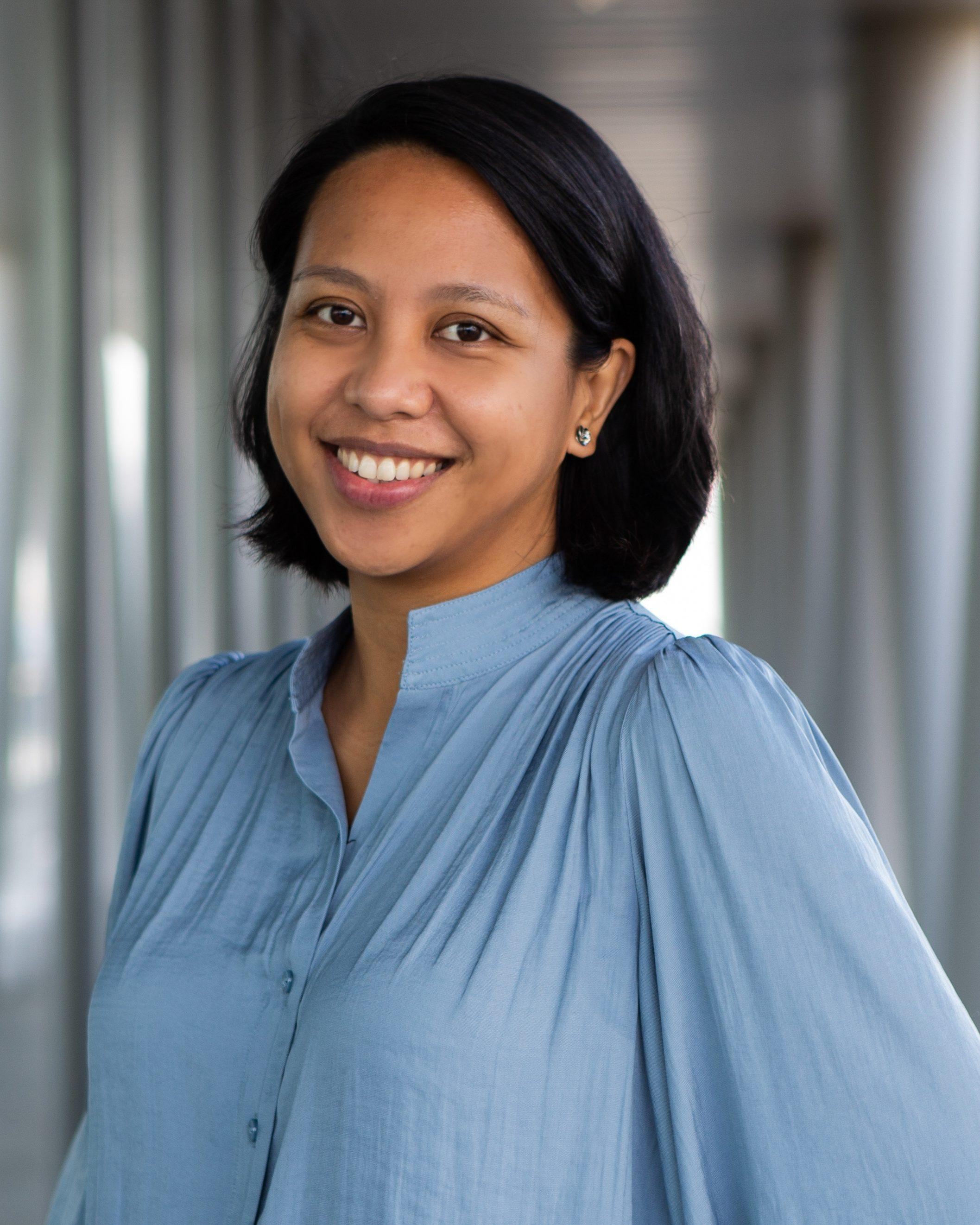The Bay Denesse Living Lab
The Challenge
Despite the evident and urgent need for tools and techniques that can be deployed in diversion outfall areas to optimize sediment retention, the issue has received relatively little attention in the overall diversion planning process. There is very little understanding of which of these techniques are the most effective, or how they can be deployed most efficiently. As pointed out in the 2018 National Academies report, “Understanding the Long-Term Evolution of the Coupled Natural-Human Coastal System: The Future of the U.S. Gulf Coast,” the current process-based understanding of green or hybrid infrastructure is not sufficient to guide project engineering or evaluation. That is, we do not have a firm grasp on the actions that humans can take to improve the functioning of the wetlands, and to make them more resilient to changing conditions. And beyond the need for tool development there is a similarly urgent need for a coastal management workforce that can think clearly and develop creative solutions in this landscape.
The Approach
To address this need for collaborative research into wetlands restoration design, as well as the need to nurture a workforce that can work creatively towards Louisiana’s future restoration needs, The Water Institute is spearheading the development of the Bay Denesse Living Lab (Lab).
In Bay Denesse, located on the descending left bank of the Mississippi River northwest of Buras, La., natural crevasses from the Mississippi River creates a landscape-scale laboratory where restoration and sediment retention techniques can be designed, built, and monitored. This living lab concept will allow people who manage coastal projects and coastal researchers to combine efforts to test and refine sediment retentions methods. The unique opportunity for researchers and practitioners to work together in an actively managed landscape will allow the Lab’s its members and collaborators to plan controlled experiments into the most effective and efficient wetlands management techniques and designs.
The Water Institute is investing in a monitoring network to measure the flow of sediment and water throughout the channels and marshes of Bay Denesse Louisiana. Bay Denesse is an open water bay in South Plaquemines Parish that is being filled in by sediment that is delivered to it from the Mississippi River. This makes it an excellent analog for river diversions, and a prime location to develop tools for optimizing the outfall areas of diversions for water flow and sediment retention.
Building upon a project funded by the National Academies of Sciences – Gulf Research Program from 2017-2021, the Bay Denesse Living Lab received support from the Charles Lamar Family Foundation in 2021 to expand the collaboration between coastal project managers, state and federal representatives, nonprofits, and universities. In addition, a high school design competition will be held for high school students which will be judged by participating experts and given the chance to be built in the Bay Denesse Living Lab area.
As a result of this effort, restoration coastal managers will benefit from the opportunity to work with researchers to hone their restoration techniques, and by improved monitoring of projects in the Lab. Researchers will gain the ability to test their ideas at a scale that would otherwise be unachievable to them, and will benefit from demonstrable broader impacts in funding proposals. Educators will benefit from the opportunity to experience real world restoration environments, and by the chance for students to engage with field leading experts during the design competition. All three groups will benefit from an influx of creative ideas that spring up during workshops and field excursions.



